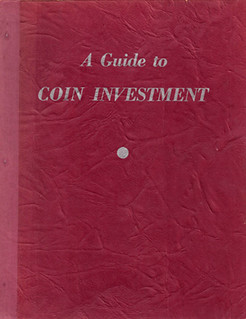
PREV ARTICLE
NEXT ARTICLE
FULL ISSUE
PREV FULL ISSUE
ROBERT BILINSKI'S COIN INVESTMENT BOOKLast week Dave Lange submitted an item about the How To Make A Killing in Coins pamphlet by Frank K. Wood. I had found a reference to a current firm in Georgia called
FC&A Publishing that might have been the original publisher. I contacted their customer support staff this week, and they confirmed for me that they had indeed published it (but alas, had no more
in stock). -Editor
Dick Johnson writes (in reference to Joel Orosz's earlier response):
Incidentally, I had a similar conversation with Lee Hewitt about the same subject, but his was base on actual data. He had a rare insight based on the location of the subscribers to his Numismatic Scrapbook.magazine. He stated collectors were located in a belt and three pockets. The belt, he said, were in the states of Wisconsin, Illinois, Indiana, Ohio, Pennsylvania and New York. The pockets were Florida, Texas and California. Apparently the number of subscribers in other states were minimal. I added: Those are also the most populous states. If collectors are a small %age of the general population, you'll naturally find more of them in the more populous states. For my Newman Portal outreach to state organizations I started with my close contacts but then made a list ordered by general population. Those states were naturally in the top ten (Central States covers several at once). The further down the list the less likely the state even has a state club to begin with. Joel adds: Hewitt’s observation fascinate me. You are certainly correct, Wayne, in noting that the “belt” States had most of the larger population concentrations of the era (1950s and 1960s). In addition, the belt states also track the first of the great westward migrations quite closely, from New York and Pennsylvania across the old Northwest Territories. The pocket states, on the other hand, track the postwar migrations toward more temperate states (in terms of climate). But that was clearly a postwar phenomenon—it’s striking how few coin collectors hailed from the South during the 19th century. As for Dr. Bilinski, I have written about him in several publications: Rare Coin Review, The Numismatist, The Asylum, and Coin World. My impression is that Bilinski’s data were generally sound, although skewed toward states where there were US Navy facilities, thus underrepresenting the Midwest. In any event, his projections of price appreciation tended toward the slightly conservative, unlike Bilinski’s “evil twin,” George Haylings, who simply extrapolated from past peak performance, without ever taking into account the inevitably of market downturns and corrections. Thanks, everyone! -Editor
To read one of Joel's Coin World articles on Bilinski, see: Are you an investor in coins? Bilinski wrote the book on that (https://www.coinworld.com/news/us-coins/2016/09/investors-owe-him-a-nice-pat-on-the-back.all.html) To read the earlier E-Sylum article, see:  Wayne Homren, Editor The Numismatic Bibliomania Society is a non-profit organization promoting numismatic literature. See our web site at coinbooks.org. To submit items for publication in The E-Sylum, write to the Editor at this address: whomren@gmail.com To subscribe go to: https://my.binhost.com/lists/listinfo/esylum All Rights Reserved. NBS Home Page Contact the NBS webmaster 
|
